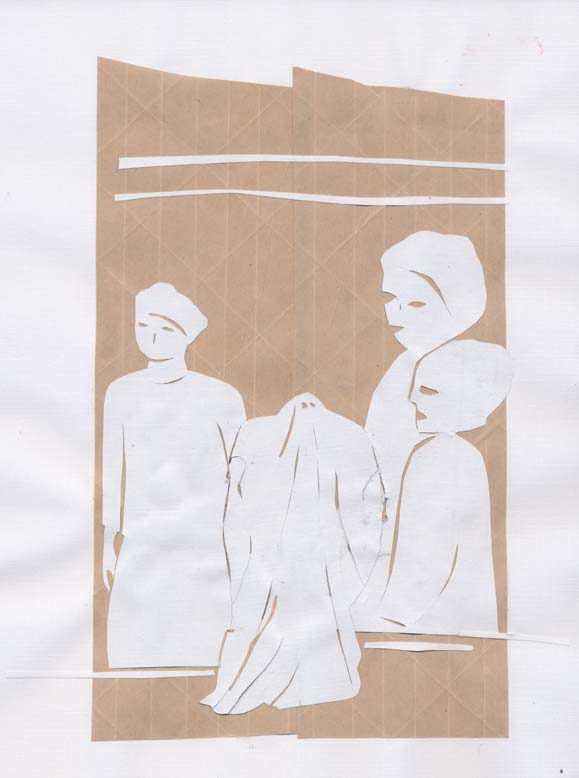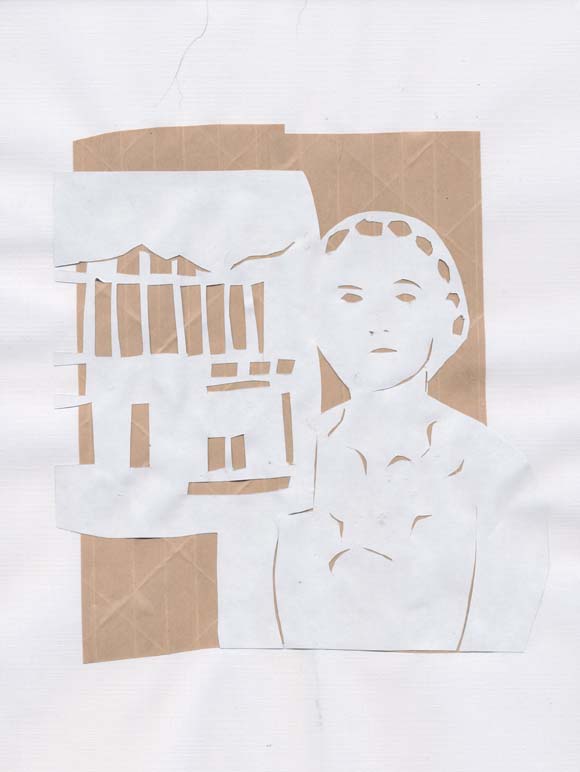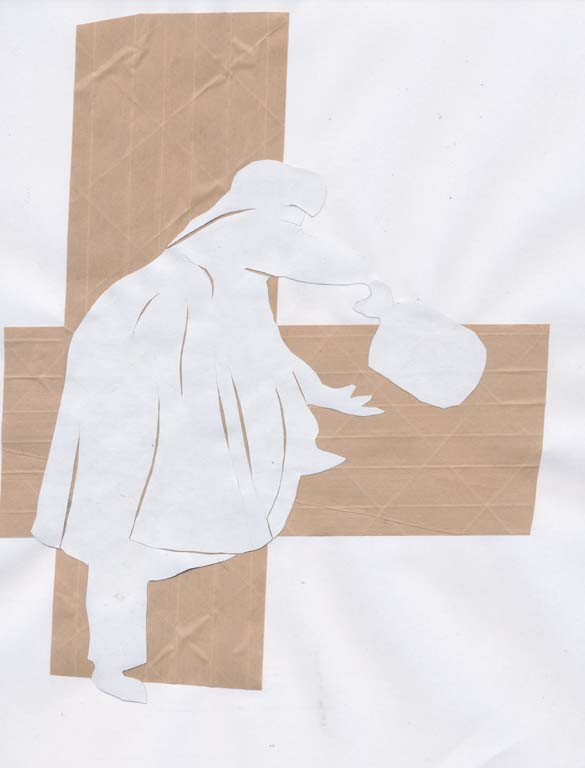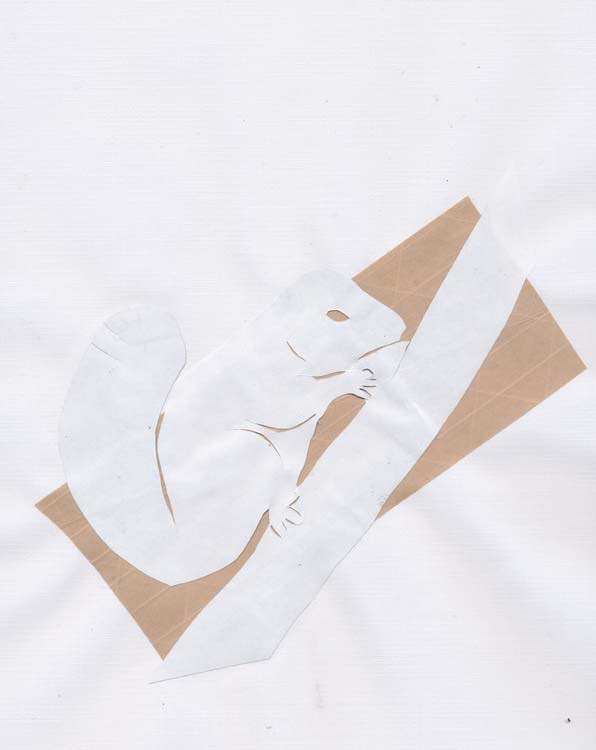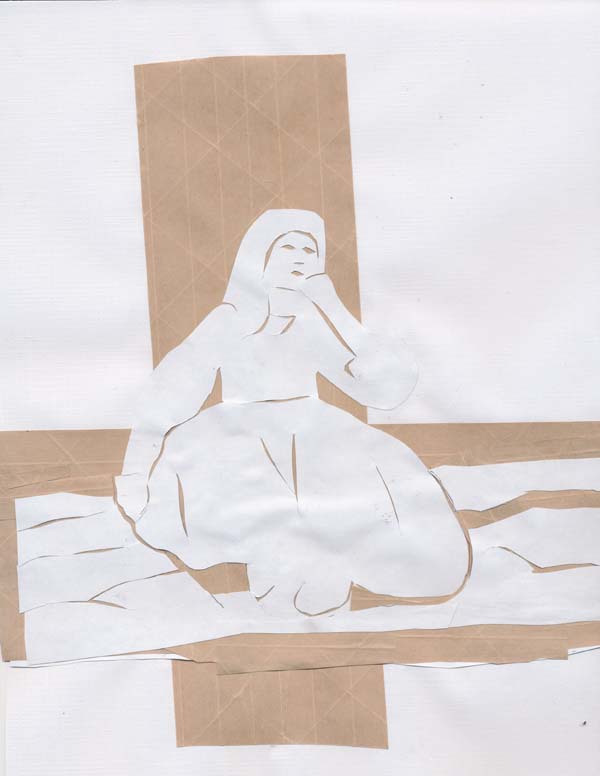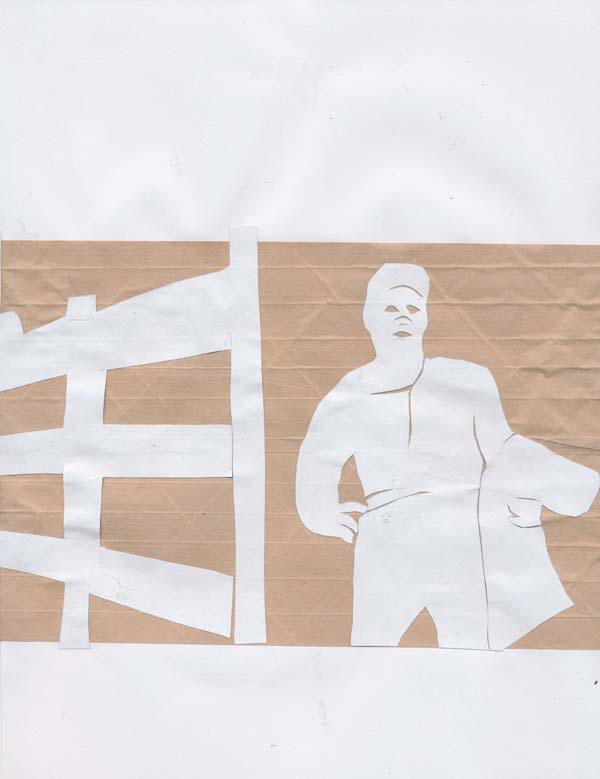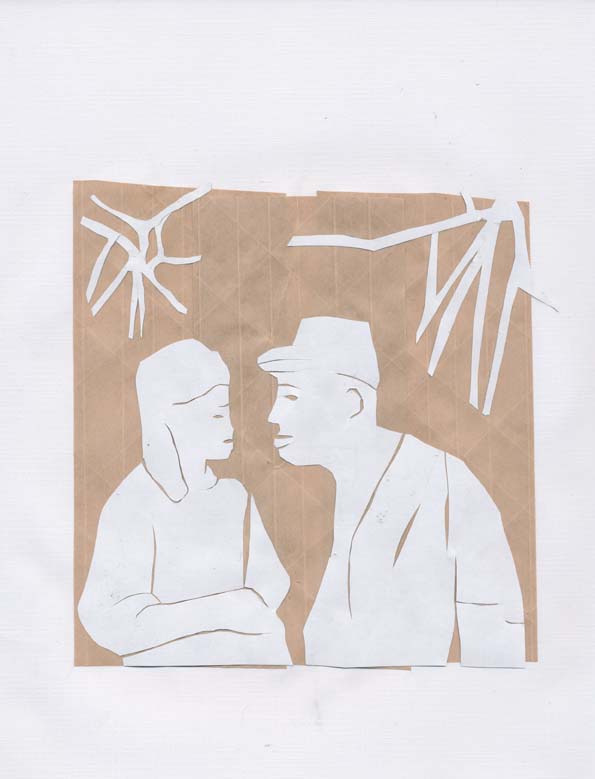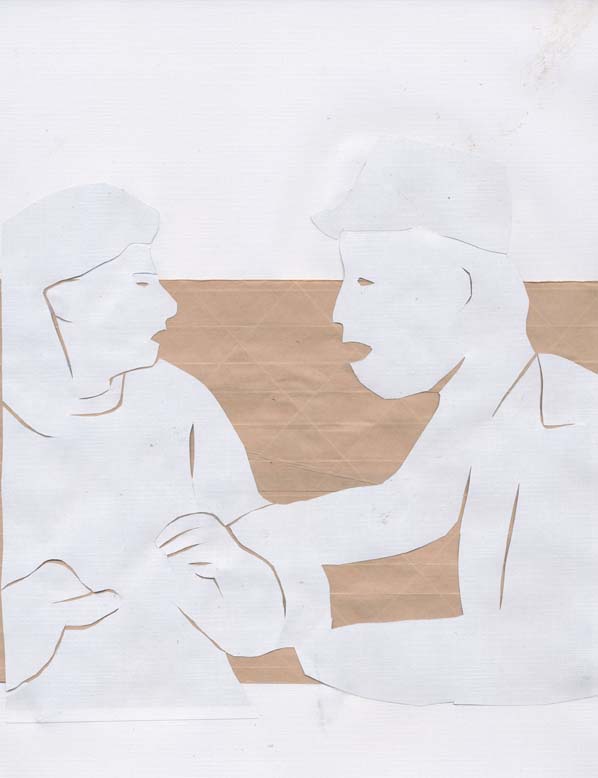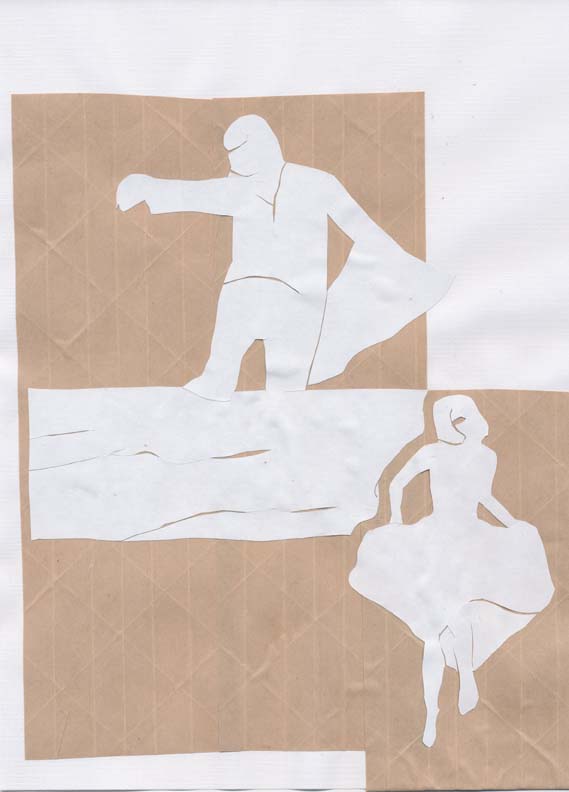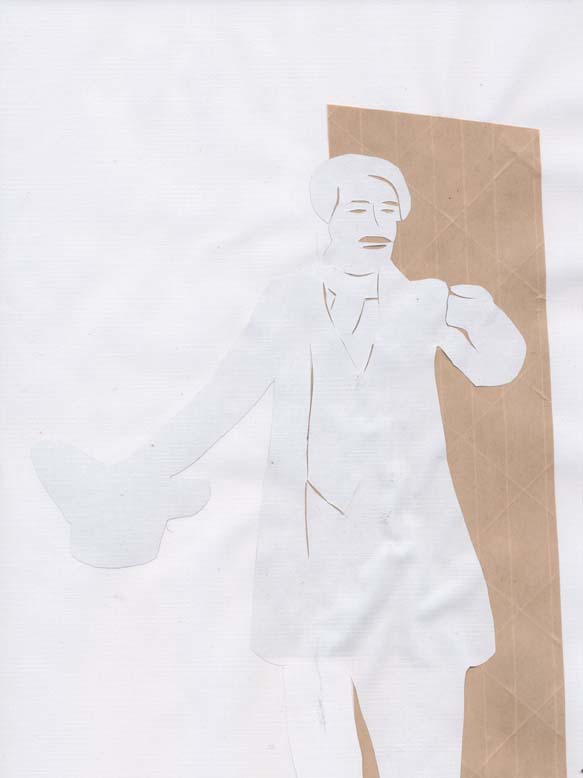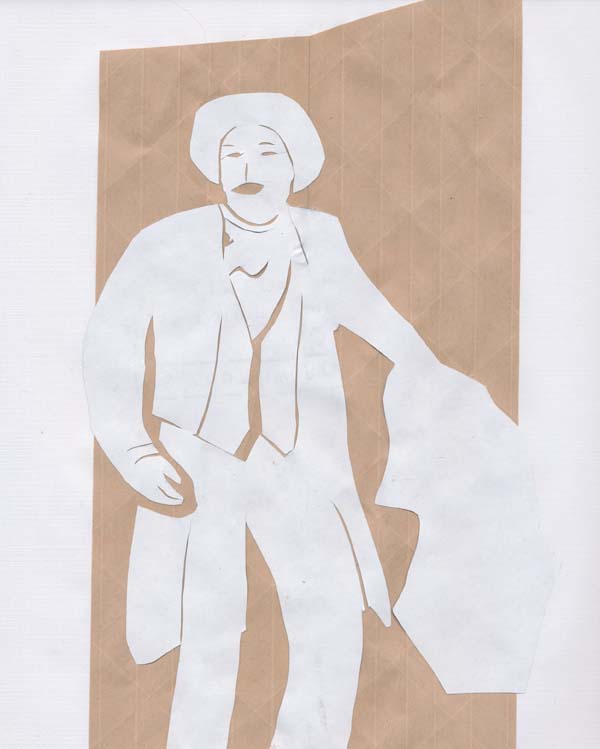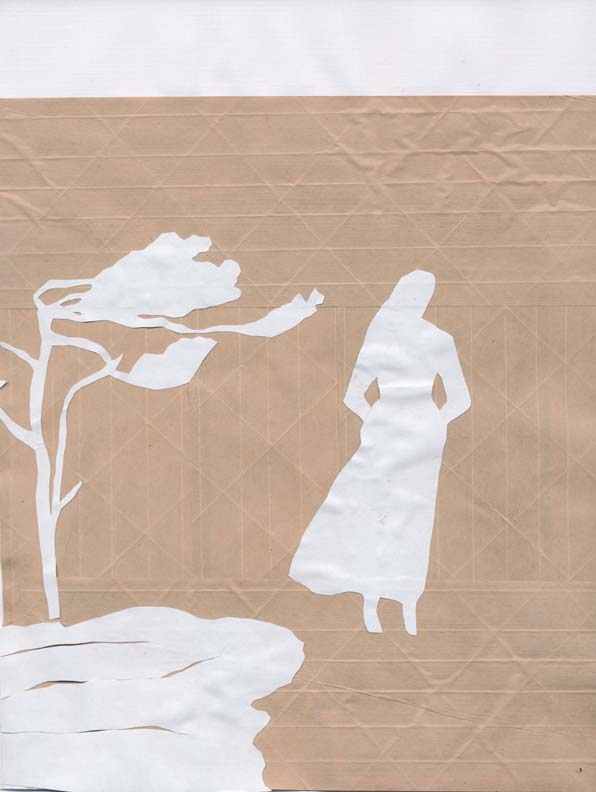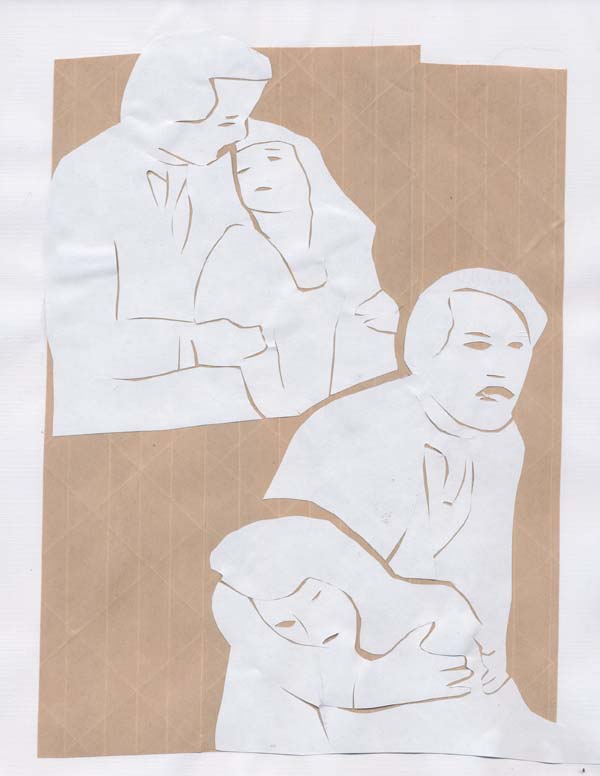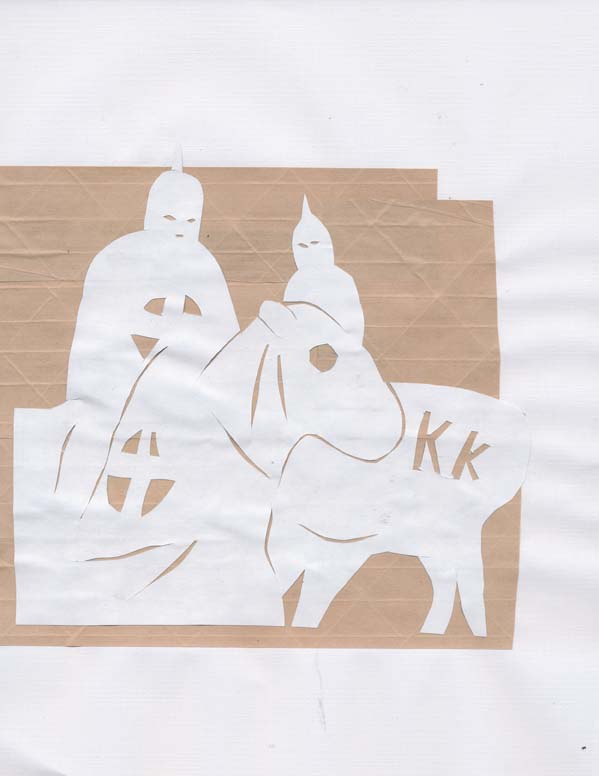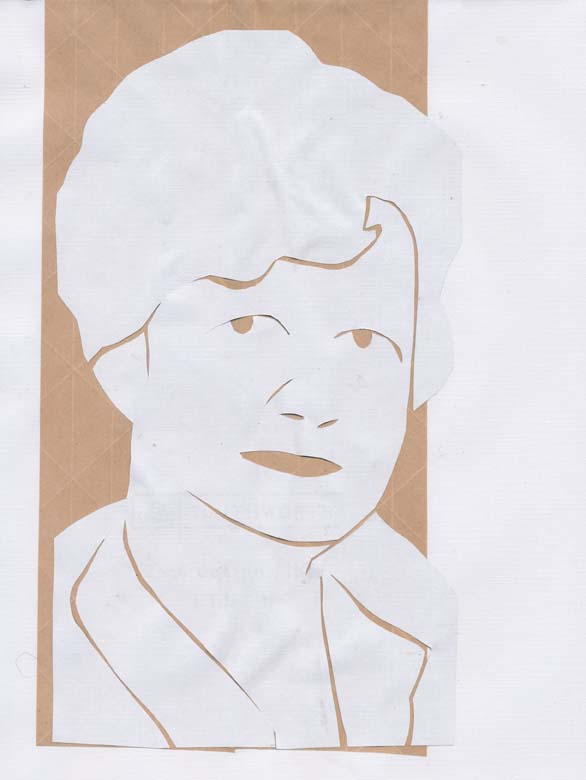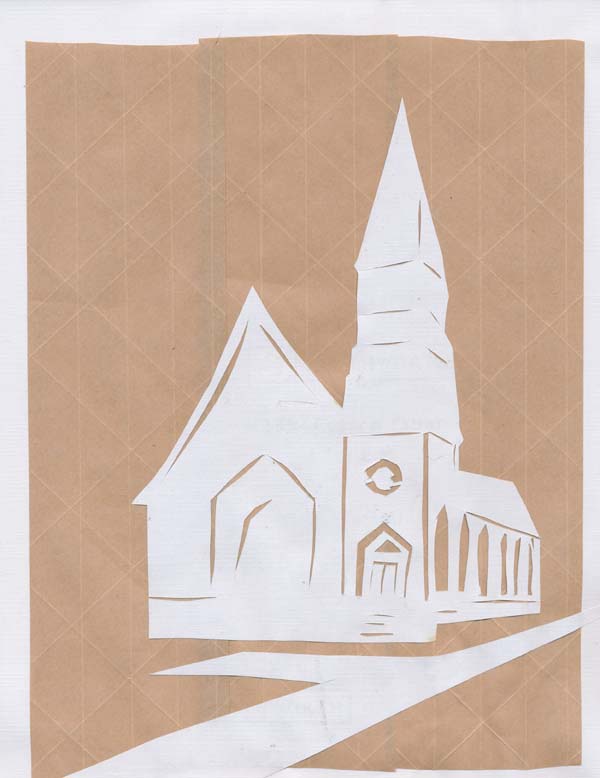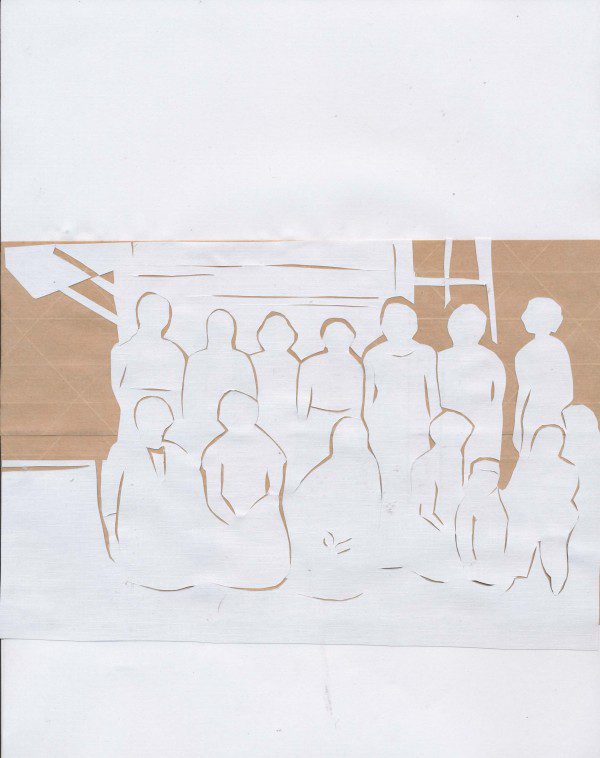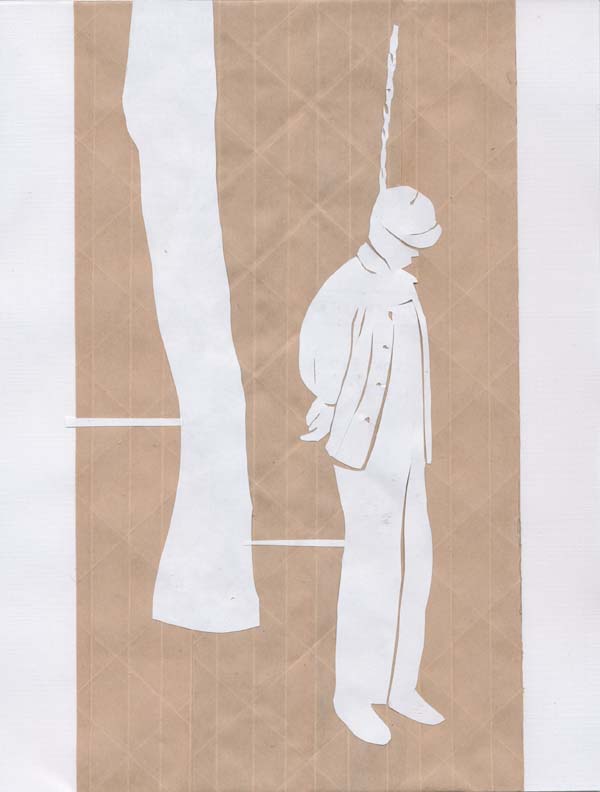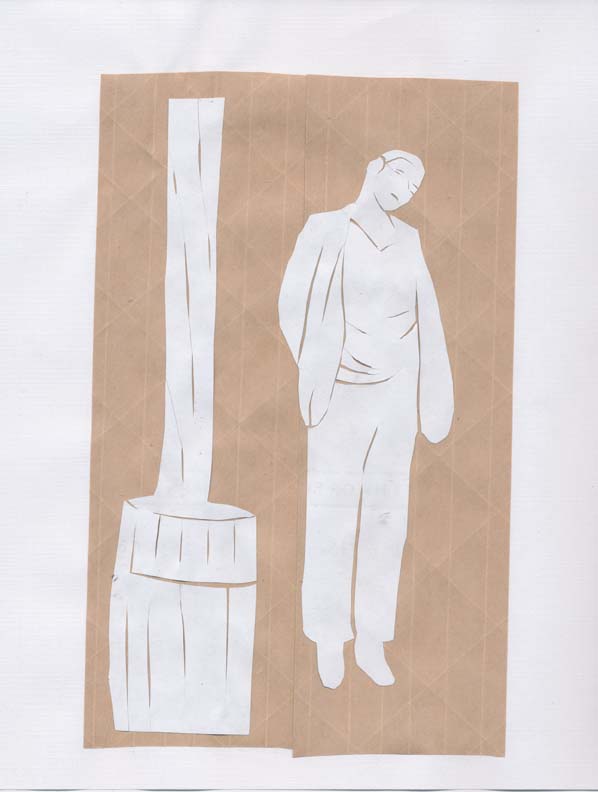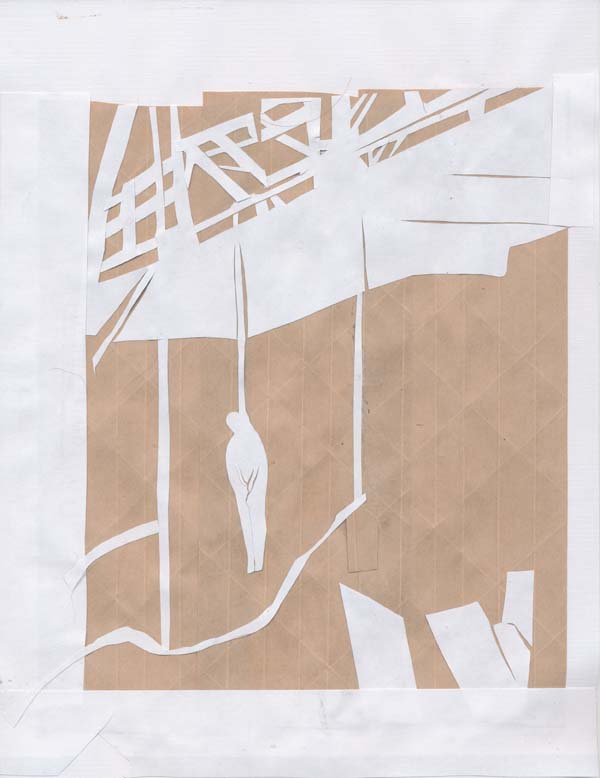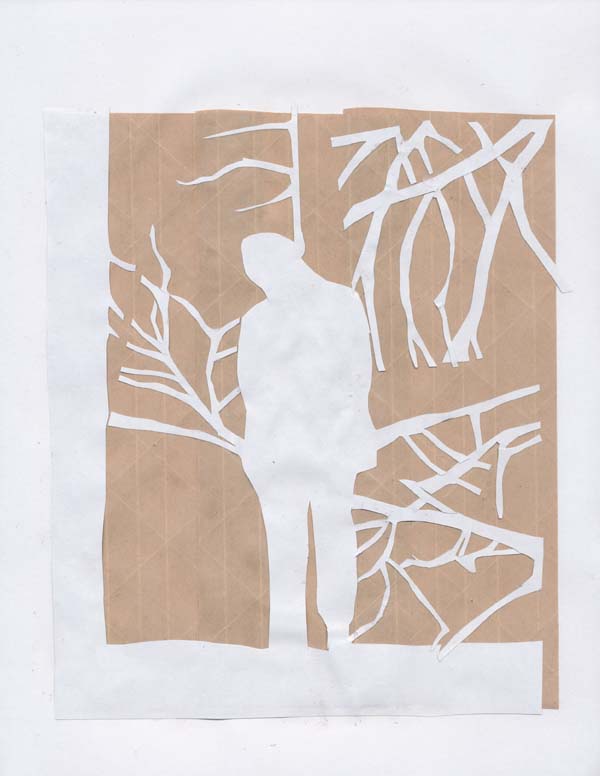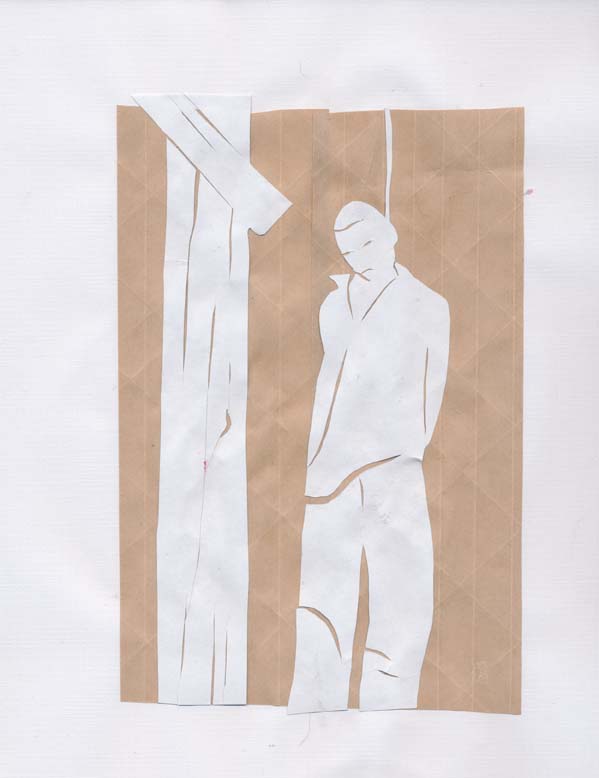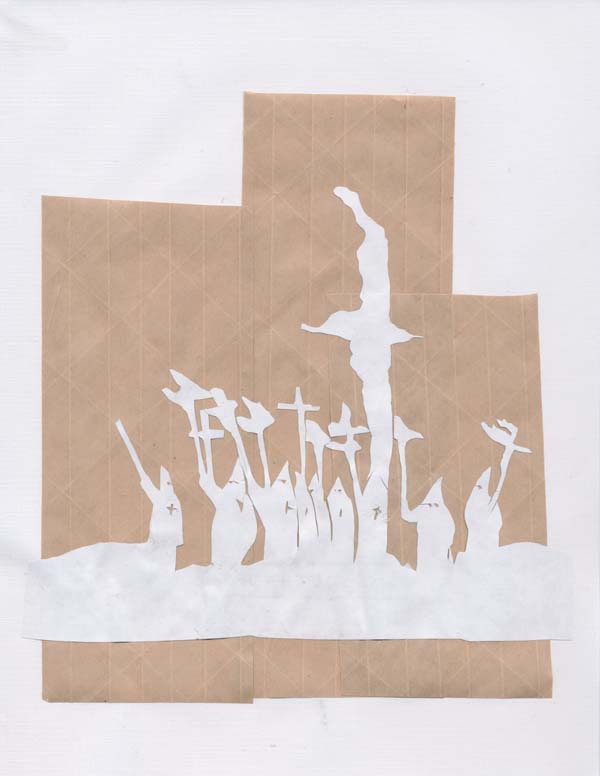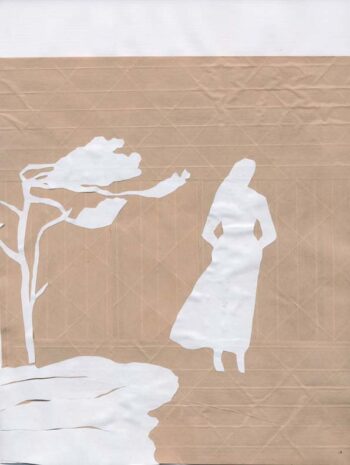
This is the third in a series of retrospective collage art focusing on myth, stories, historic events, and cultural attitudes about rape, as seen through different time periods. The art is made from paper cutouts and paper packing tape. As an antiques dealer, I often ship fragile ancient ceramics, so this tape is part of my everyday visual world. This series is excerpted from my manuscript, Famous Rapes.
***
In the chaos of post–Civil War Reconstruction and all the way through the Great Depression, a myth about the bestial sexuality of black men floated about the South.
D.W. Griffith’s 1915 film, The Birth of a Nation, presents the founding of the Ku Klux Klan as a heroic attempt to bring order to the mob rule of carpetbaggers and newly emancipated Southern blacks. In the film, former Confederate soldier Ben Cameron sees a group of white children scaring black children by hiding under a sheet, pretending to be ghosts.
From this inspiration, the KKK is born.
Soon, his fiancée, who is from the North, hears about his involvement in white supremacy and breaks off their engagement in order to please her father.
She sits within the walls of her father’s home, her only companion, a caged bird.
Ben, too, is distraught. His virginal younger sister Flora consoles him, then skips off to fetch water from a nearby stream.
As she looks up from her chore, she catches a glimpse of a squirrel.
She sits down on a log to observe it.
While she sits, Gus, a black man, feeling newly empowered, sees her.
He runs toward her, clutches her arms, and announces that he is going marry her.
Until this moment, the two had been strangers.
Flora runs away,
but Gus chases.
Flora’s brother Ben, who is already out looking for her, hears and comes running.
But Gus continues to pursue Flora, all the way to end of a cliff.
Ben catches up just in time…
…to see Flora protect her chastity by throwing herself over the edge.
He rushes to the bottom and holds his little sister.
She dies in his arms. A title card tells us, “For her who had learned the stern lesson of honor we should not grieve that she found sweeter the opal gates of death.”
Gus is later captured by a mob, tried by the KKK, murdered, and deposited on the steps of the governor’s home.
The mob murder of black men became so identified with allegations of black-on-white rape that such interracial rape came to be referred to as “the one crime.”
Jessie Daniel Ames, an active member of several Methodist women’s groups, set out to insist that the rape of white women not be used for the racist agendas of white men.
By networking among women’s church groups across the South, she formed the Association for Southern Women for the Prevention of Lynching.
The organization began in 1930. By the time they disbanded in 1942, they had garnered the support of 40,000 women.
These genteel Southern ladies had had enough of the violence being done in their names. In the association’s January 1933 newsletter, a Nannie Hite Winston from Kentucky writes,
The Association of Southern Women for the Prevention of Lynching has undertaken to create a public opinion against lynching so strong that a sheriff will be afraid to let a mob lay hands on a prisoner and that courts will punish those who take part in the mob. We women are the ones to take the initiative because many still contend that lynching is necessary for the protection of women, in spite of the fact that statistics show that less than a third of the recorded lynchings of the past ten years have been for crimes or even attempted crimes against women.
One of their projects was to go into communities, conduct interviews, and record what had really happened.
Joe Love, born 1902, had been working on the leased Sledge, Mississippi, farm of a Bill Richardson. Bill didn’t pay Joe, so Joe and his co-workers began to talk about leaving the farm. Bill then accused Joe of attacking his wife.
We don’t know the name of this man from Abbeville, Alabama. He was accused of criminal assault on a white woman and taken from the custody of Sheriff J. L. Corbett. Corbett later faced impeachment proceedings for allowing this to happen, but he was exonerated of all wrongdoing by a vote of 4 to 2.
This anonymous man from Lowndes County, Mississippi, had a good crop. His landlord wanted it, so he accused the man of insulting a white woman. The lynchers warned the visiting preacher that his evening sermon might be disturbed by what they were about to do. No one intervened, and the lynching only became known outside of Lowndes County when the body was found downstream.
In a letter dated April 2, 1936, a J. A. Lawrence of Atlanta, Georgia, representing the Equal Rights for Whites Movement, wrote this to the association:
Dear Mesdames [sic]: I feel sure that your blood righteously boils as mine does at the latest dastardly heinous crime committed by negroes (the attack and slaughter [of] Miss Woodward of Huntsville Alabama.)
White womanhood is not [a] toy for negroes to play with; raising girls for the gratification of African lust is no pastive [sic] (the Assoc. for Prev. of Lynchings should work to prevent RAPE-and the lynching menace will disapear [sic].
J. A. Lawrence was not alone in this point of view. In addition to their investigative efforts, the association also sponsored a playwriting competition for work with anti-lynching themes.
This is from the association’s typed record of a phone conversation dated Monday morning, January 18, 1937:
She then reported that she was opposed to lynching, that everybody was desperately opposed to lynching, and that we never lynched except was necessary to do so to protect women and that if we would work against the crime that caused lynching and would see to it that the law convicted Negroes, it would be better than to put on these plays which stirred up in Negros a feeling that they were as good as white people and they could mix with white people socially.

